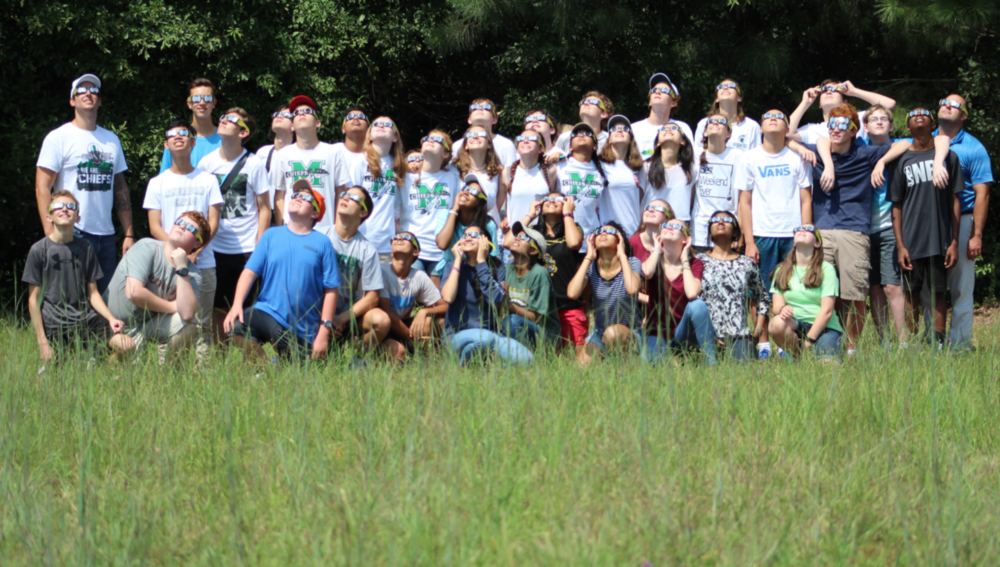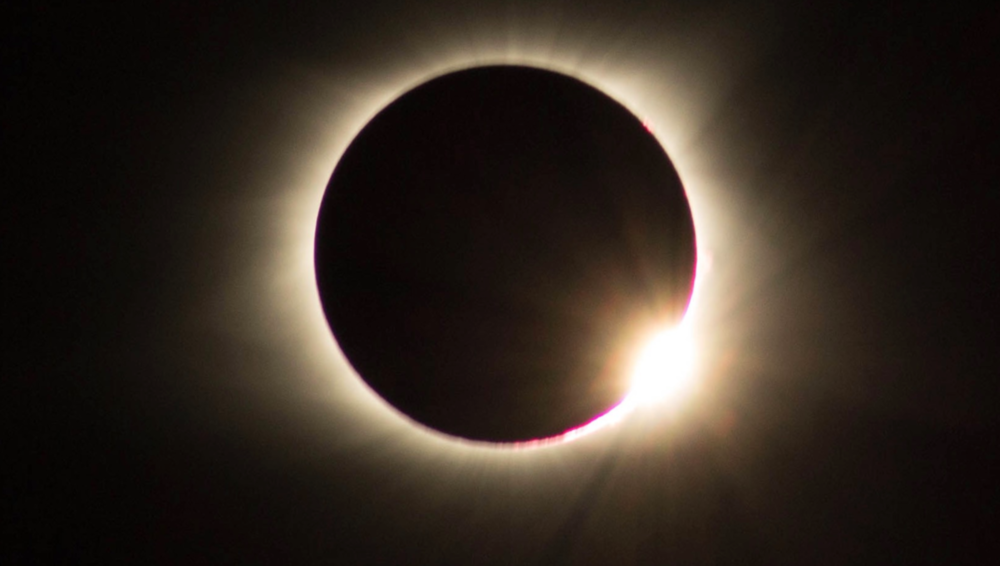
Section Branding
Header Content
A Trip Into Totality: How Students Experienced A Once-In-A-Lifetime Phenomenon
Primary Content

The eclipse of 2017 was the first transcontinental path of totality in almost 100 years. My own excitement grew as the date approached, but being a new teacher to the area and only a week under my belt, I was hesitant to ask for a field trip. Because our school was not within the path of totality, the eclipse was not being pushed very much. Instead of witnessing a partial eclipse in Peachtree City, I encouraged many of my students to ask their parents to make it a family trip. But, with only a week before the eclipse, I finally asked for that field trip, and I was happily surprised when I was met with enthusiasm and support. It took almost 3 days to plan and get final approval from the county school board, and permission forms and donations were collected by the Friday before the big event.
Our bus ride was long, but the students’ positive energy carried us through the traffic of fellow spectators. Four hours after we departed, we arrived at our destination: Lavonia, GA. It was the farthest we could travel into totality without leaving the state, a constraint of our late field trip approval. The students rushed off the bus, threw on their glasses and looked up… “It’s already started!” one student exclaimed. It was 1:18pm and a tiny bite was missing from the sun.
We ushered our students to set up their blankets in a beautiful grass field, and they began to eat lunch. As the students ate their food, a parent chaperone began unboxing his telescope, an 8" Schmidt-Cassegrain telescope with a digital camera and solar filters. By 2:10 PM, students had finished lunch and were ready for the main event. We counted down to 2:15 and started collecting data with the Pasco digital probes. Students then moved over to see the eclipse through the telescope’s digital screen. They were in awe when they saw sun spots and a massive solar prominence. Before we knew it, we were counting down again to the time of totality, 2:39 PM for our site. Cars stopped, voices faded, and even Mother Nature paused for this climatic view.

I looked around to see my students’ faces. There was not one smile. Mouths were open in amazement and eyes glued to the beautiful coronal display of the eclipse. But as quickly as it started, it came to an end. We waited 10 minutes after the eclipse to stop the data collection and pack our bags.
"By being able to view the solar flares and corona of the sun during the eclipse was an experience and discovery that could not have been gained from television channels and news telecoms. The various cameras and telescopes used to capture the eclipse close up also broadened the way we look and investigate our universe and the interactions with other STEM students allowed for collaboration on the observations and discoveries we made from looking at the eclipse. I am truly amazed from this once in a lifetime experience." —McIntosh High School student
Beginning the year with such excitement is something every educator hopes to have. The impact this kind of event has on students is game-changing as it sparks genuine inquiry and interest in STEM fields. Ultimately, I am thankful to everyone who helped put this last-minute trip together, especially my Principal Lisa Fine.






